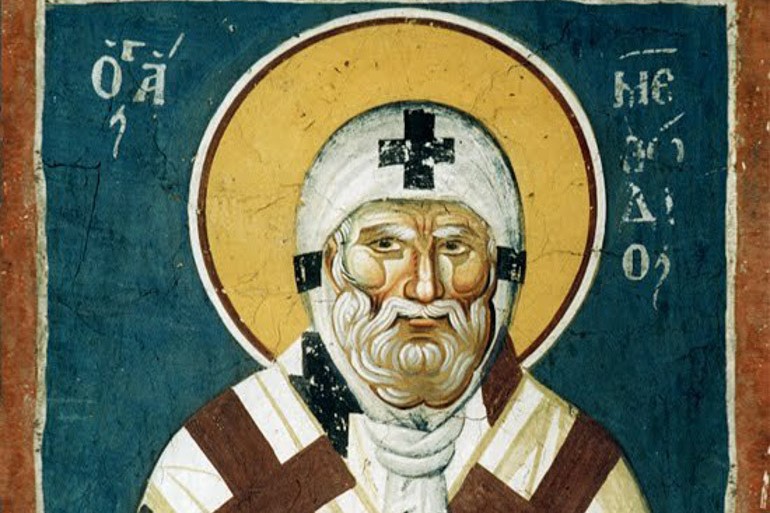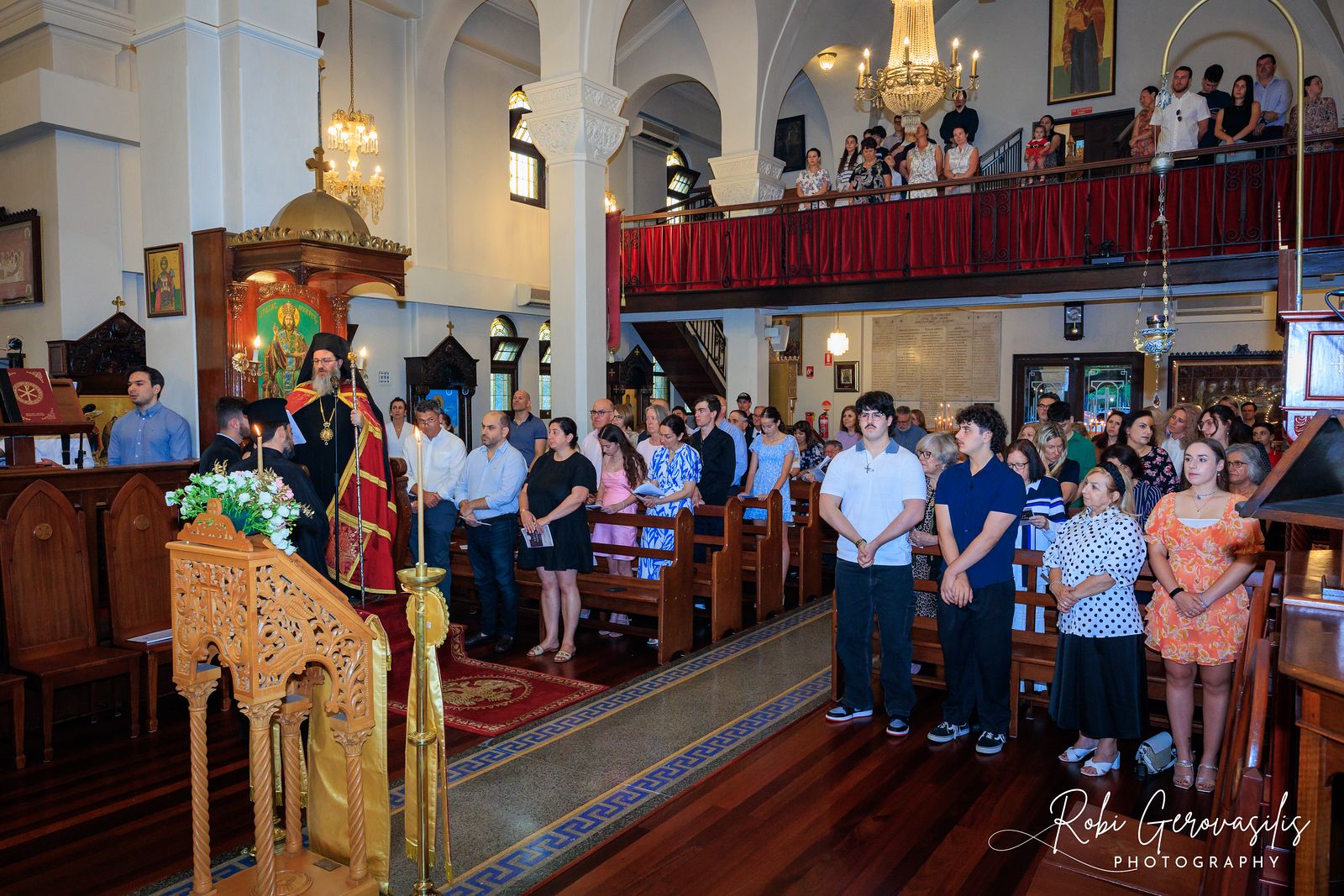Saint Methodius, Patriarch of Constantinople (14 June)


Saint Methodius, Patriarch of Constantinople, was born in Sicily into a rich family. Having a vocation to serve God, he went while still in his youth off to a monastery on the island of Chios and renovated it with his means. During the reign of the iconoclast Leo the Armenian (813-820), Methodius held the high position of “apokrisiaros” (“advocate for Church matters”) under the holy Patriarch Nikēphóros (June 2). He was dispatched by the patriarch to Rome on a mission to the papacy and he remained there. During this period Leo the Armenian removed Nikēphóros from the patriarchal throne and put on it the iconoclast Theodotus of Melissinea, given the nickname “Kassiter” (“Tinman”) (815-822). After the death of Leo the Armenian, Saint Methodius returned, and in the dignity of presbyter he struggled incessantly against the Iconoclast heresy.
The emperor Michael the Stammerer (820-829) at first was noted for his benevolence and he set free many imprisoned by his predecessor for their veneration of icons, but after a while he renewed the persecution against Orthodoxy. Saint Methodius was locked up in prison in Akrita. After the death of Michael the Stammerer, the ruler was Theophilus (829-842), who also was an iconoclast. More refined a man than his father, he set free Saint Methodius, who likewise was a man of learning, superbly skilled in matters not only ecclesial, but also civil. Having received his freedom, Saint Methodius renewed the struggle with the heretics, and for a while the emperor tolerated this.
But after defeat in a war with the Arabs, Theophilus vented his anger against Methodius, saying, that God had punished him because he had let an “icon-worshipper” come close to him. Methodius objected, saying that the Lord was angry with him for the insults upon His holy icons. They gave the saint over to tortures, and struck him much about the face, from which his jaw was broken. Ugly scars remained on his face. Methodius was sent off to the island of Antigonos and he was locked up there with two robbers in a deep cave. In this dark prison where the light of day did not penetrate, Methodius languished for 7 years until the death of the emperor Theophilus.
During this time, the holy Confessors Theodore and Theophanes the Branded (December 27), who had also been sent to prison, sent Methodius greetings in verse, and the prisoner replied with greetings in verse, as well.
After the death of Theophilus, his son Michael III (842-867) began to rule, but not being of mature age, the Byzantine Empire was actually ruled by his mother, the empress Theodora, a venerater of icons.
The empress tried to extirpate the Iconoclast heresy, and gave orders to free the confessors imprisoned for icon veneration. The heretic Annios occupying the patriarchal throne was banished, and Saint Methodius chosen in his place. At Constantinople was convened a local Council with Saint Methodius presiding (842). The Council restored icon veneration and established an annual celebration of the triumph of Orthodoxy. The “Synodikon of Orthodoxy” compiled by Saint Methodius is read on the First Sunday of Great Lent.
Attempting to undermine the authority of Saint Methodius, and also the love and esteem of his flock for him, the heretics slandered him as having transgressed chastity. The slander was exposed as such, and the enemies of the saint put to shame. The final years of the saint passed peacefully, he toiled much, wisely guided the Church and his flock, renovated temples ruined by the heretics, gathered up the relics of saints scattered about by the heretics, and transferred the relics of Patriarch Nikēphóros from the place of his imprisonment back to Constantinople. Saint Methodius died in the year 846. He was spiritually close to Ioannikos (4 November), who had foretold that he would become patriarch and also the time of his death. Besides the “Synodikon of Orthodoxy,” the holy hierarch also compiled a rule for those converted to the Faith, three rites of marriage and several pastoral sermons and church hymns.
As for Saint Methodius, he was born to wealthy parents in Syracuse of Sicily about the end of the eighth century. Being a presbyter, he was sent as an ambassador to Rome in 815 or 816 on behalf of Patriarch Nicephorus of Constantinople, who had been exiled by Leo the Armenian (see June 2). After Leo’s death, he returned to Constantinople; but since he was a zealot for the veneration of the holy icons, he was immediately exiled by Emperor Michael the Stutterer to a fortress near Bithynia. When Michael died, he was freed for a short time; but then, because of his confession of the Orthodox Faith, he was imprisoned again by the Emperor Theophilus in a dark and foul-smelling sepulcher. Since this was not enough for the Emperor’s inhumanity, he commanded that two thieves be shut up with Methodius, and when one of them died, that the corpse not be removed. While the Saint was imprisoned there, a certain poor fisherman ministered to his needs. Finally, when the Church received its freedom under Saint Theodora the Empress, the Saint ascended the patriarchal throne of Constantinople in 842. Together with the holy Empress, Methodius restored the holy icons to their proper honor; this is commemorated on the Sunday of Orthodoxy. He governed the Church of Constantinople for four years, and reposed in 846.
Methodius was born in the town of Syracuse in Sicily. After the completion of his secular studies, he was tonsured a monk and began to live a life of asceticism in a monastery. Patriarch Nicephorus took him into his service. During the reign of the iconoclastic emperors, he became widely known as a firm defender of the veneration of icons. For this, the wicked Emperor Theophilus exiled him to an island with two common criminals, where he languished in a damp prison for seven years, without light and without sufficient food, as though in a grave. During the time of the pious Empress Theodora and her son Michael, Methodius was freed and was chosen as patriarch (in accordance with an earlier prophecy of St. Joannicius the Great). On the first Sunday of the Great Fast [Lenten Season], Methodius solemnly carried the icons into the church, and he also wrote a canon in honor of the icons.
Unable to outwit him, the vile heretics hired a woman who declared that the patriarch had engaged in an impure relationship with her. The whole of Constantinople was horrified at this slander. Nevertheless, not knowing how he could otherwise prove his innocence, the patriarch overcame his embarrassment, removed his clothes and stood naked before the court, which he had assembled at his request, and showed his withered body, debilitated from fasting. The court was clearly convinced that the patriarch had been slandered. Hearing of this, the people rejoiced and the heretics were put to shame. Then, the woman admitted that she had been persuaded and paid to bring this slander against the saint of God. Thus, those who thought to bring shame upon Methodius, unintentionally increased his fame. This great confessor of the Faith died peacefully in the year 846 A.D. and took up habitation in the Kingdom of God.
Apolytikion of Methodius the Confessor
Fourth Tone
A model of faith and the image of gentleness, the example of your life has shown you forth to your sheep-fold to be a master of temperance. You obtained thus through being lowly, gifts from on high, and riches through poverty. Methodios, our father and priest of priests, intercede with Christ our God that He may save our souls.
Source: oca.org / goarch.org / westserbdio.org




